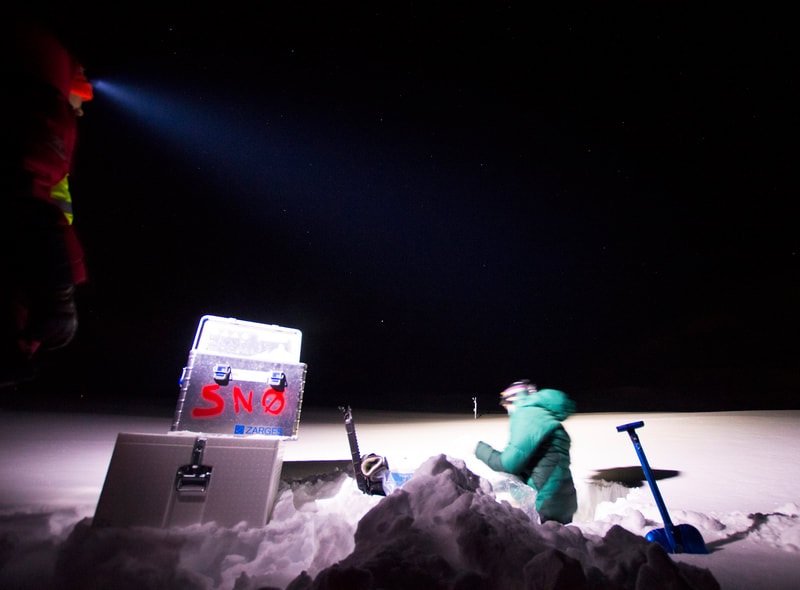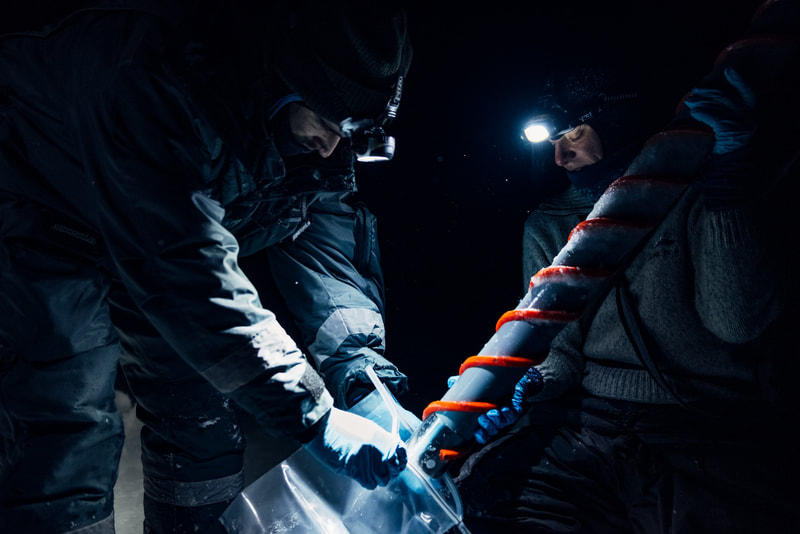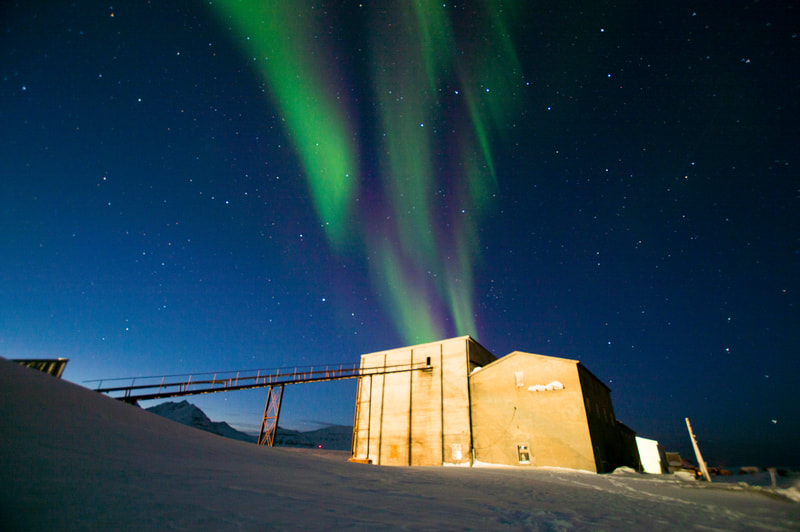|
James is currently doing fieldwork in the High-Arctic archipelago of Svalbard (79°N). It’s the middle of winter and polar night, which means 24-hour darkness and temperatures well-below freezing.
Field studies on snow and ice phenomena are often restricted to a single season – usually the spring or summer period. Therefore, the understanding of Arctic climate, biogeochemistry, and ecosystems during the winter and on a seasonal basis is limited by a lack of observations. We are sampling the Arctic snowpack overlying glaciers and tundra, as well as drilling cores of glacier ice, to better-understand the year-round microbial and biogeochemical dynamics of these high-latitude systems. Working during the polar night presents unique challenges such as navigation and route-finding across ever-changing fields of crevasses, polar bear watch in the darkness, highly changeable weather conditions (typically high winds and temperatures well below freezing), and the practicalities of sampling frozen soils which are buried underneath thick snow-packs and near-impenetrable layers of refrozen ice. Yet, the rewards are plentiful: truly novel data and insight into the functioning of glacier and glacier-adjacent systems during the long polar night, ski expeditions in the darkness, stunning auroras, and cosy activities with the overwintering community in the northernmost settlement in the world. Photo credit (left to right): James Bradley, Dagmara Wojtanowicz, James Bradley
0 Comments
Leave a Reply. |
Archives
March 2024
Categories |



 RSS Feed
RSS Feed
